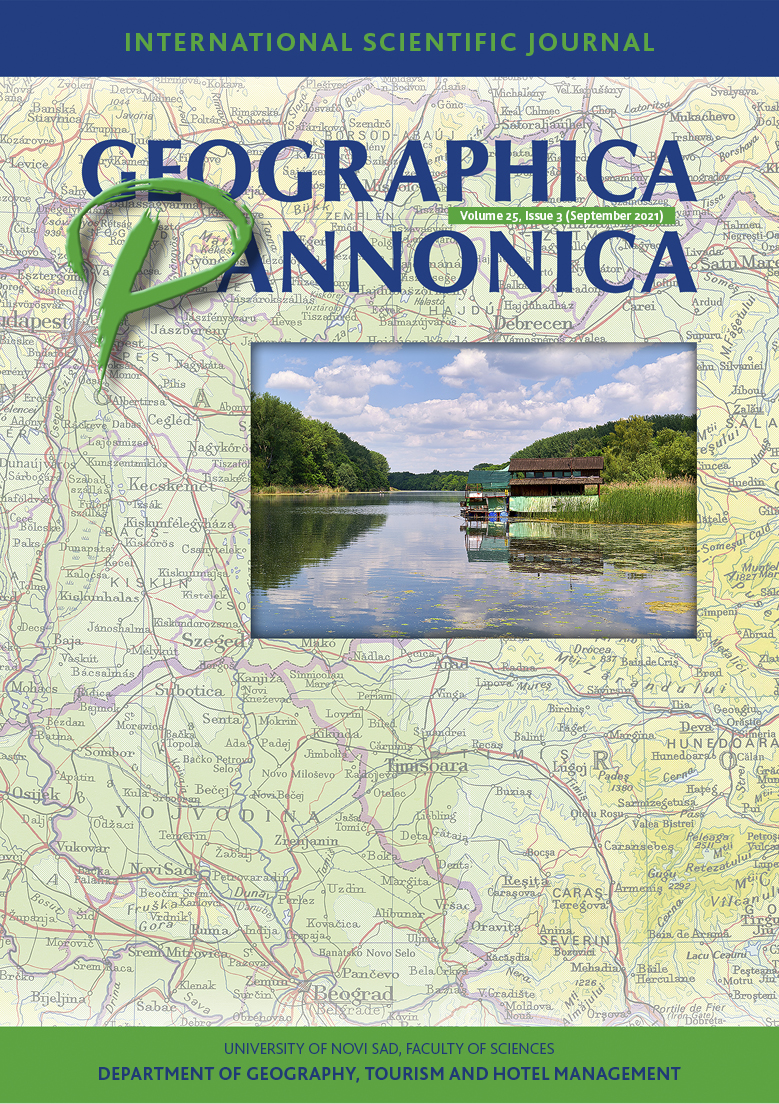Using geoinformation tools for redistricting: Slovenian experiences
Abstract
Electoral districts are an important component of the electoral system, as they have a significant impact on election results. Due to the uneven spatial distribution of electoral support political parties receive, district magnitude and the geography of electoral districts can have a decisive influence on the electoral viability of individual parties and candidates. Districting and redistricting are not a simple bureaucratic process but a politically very sensitive process with outcomes that can have far-reaching political consequences.
Geoinformation tools can have a very important role in electoral district planning. In this article we aim to present the key advantages and disadvantages of their use. The presented results are derived from practical experience gained over the course of developing a new system of electoral districts in Slovenia.
References
ACE Project (2020). The ACE Electoral Knowledge Network. URL: https://aceproject.org/ (14.7.2020).
Altman, M. (1998). Districting Principles and Democratic Representation. California Institute of Technology.
Altman, M. (1997). The computational complexity of automated redistricting : Is automation the answer? Rutgers computer & technology law journal, 23(1), 81–142.
Altman, M., Macdonald, K., & McDonald, M.P. (2005). From crayons to computers: The evolution of computer use in redistricting. Social Science Computer Review, 23(3), 334–346. DOI: 10.1177/0894439305275855.
Altman, M., & McDonald, M.P. (2019). The Public Mapping Project. Ithaca and London: Cornell University Press. DOI: 10.1353/book.62760.
Browdy, M.H. (1990). Computer Models and Post-Bandemer Redistricting. The Yale Law Journal, 99(6), 1379. DOI: 10.2307/796740.
Crampton, J.W. (2013). Commentary: Political applications of the geoweb: Citizen redistricting. Environment and Planning A, 45(1), 70–76. DOI: 10.1068/a44486.
Eagles, M., Katz, R.S., & Mark, D. (2000). Controversies in political redistricting: GIS, geography, and society: editorial. Political Geography, 19, 135–139.
Eagles, M., Katz, R.S., & Mark, D. (1999). GIS and Redistricting. Social Science Computer Review, 17, (1), 5–9. DOI: 10.1177/089443939901700101.
Gallagher, M., Mitchell, P. (Eds.) (2005). The Politics of Electoral Systems. Oxford: Oxford University Press. DOI: 10.1093/0199257566.003.0023.
Grad, F. (2004). Volitve in volilni sistem. Ljubljana: Uradni list Republike Slovenije.
Gudgin, G., & Taylor, P. (1979). Seats, votes, and the spatial organisation of elections. London: Pion.
Hess, S.W., Weaver, J.B., Siegfeldt, H.J., Whelan, J.N., & Zitlau, P.A. (1965). Nonpartisan Political Redistricting by Computer. Operations Research, 13(6), 998–1006. DOI: 10.1287/opre.13.6.998.
Jelen, A., Bojc, D., & Veršič, A. (2019). Proposal of new electoral districts and constituencies. Online ArcGIS application for political parties. Internal application with limited access. GDi d.o.o., Ljubljana.
Krašovec, A. (2007). Volilne študije. Ljubljana: Fakulteta za družbene vede.
Krevs, M., Veršič, A., & Rogelj, B. (2020). Geoinformacijska podpora preoblikovanju območij volilnih enot in volilnih okrajev. In Ciglič, R., Geršič, M., Perko, D., & Zorn, M. (Eds.). GIS-i v Sloveniji - Modeliranje pokrajine. Ljubljana: ZRC SAZU, pp. 133–147. DOI: https://doi.org/10.3986/9789610504696_10.
Morrill, R.L. (1981). Political Redistricting and Geographic Theory. Washington D.C.: Association of American Geographers.
Nagel, S.S. (1965). Simplified Bipartisan Computer Redistricting. Stanford Law Review, 17, (5), 863. DOI: 10.2307/1226994.
Number of voters by house numbers for the territory of Slovenia (situation April 2019). Central Population Register. Ministry of the Interior (MNZ). Ljubljana.
Register of spatial units (situation April 2019). Surveying and Mapping Authority of the Republic of Slovenia (GURS). Ljubljana.
Rogelj, B., Krevs, M., Veršič, A., & Prešern, M. (2019a). Predlog sprememb območij volilnih enot in volilnih okrajev (Poročilo Medresorske delovne skupine za pripravo sprememb in dopolnitev ZVDZ). Ljubljana.
Rogelj, B., Krevs, M., Veršič, A., & Prešern, M. (2019b). Dopolnjen predlog sprememb območij volilnih enot in volilnih okrajev (Poročilo Medresorske delovne skupine za pripravo sprememb in dopolnitev ZVDZ). Ljubljana.
Veršič, A., & Jelen, A. (2019). User’s manual for online application "Proposal of new electoral districts and constituencies". Internal material with limited access. Ministry of Public Administration of the Republic of Slovenia. Ljubljana.
Vickrey, W. (1961). On the Prevention of Gerrymandering. Political Science Quarterly, 76(1), 105–110.
Weaver, J.B., & Hess, S.W. (1963). A Procedure for Nonpartisan Districting: Development of Computer Techniques. The Yale Law Journal, 73(2), 288. DOI: 10.2307/794769.
Webster, G.R. (2004). Representation, geographic districting, and social justice. Journal of Geography, 103(3), 111–126. DOI: 10.1080/00221340408978586

